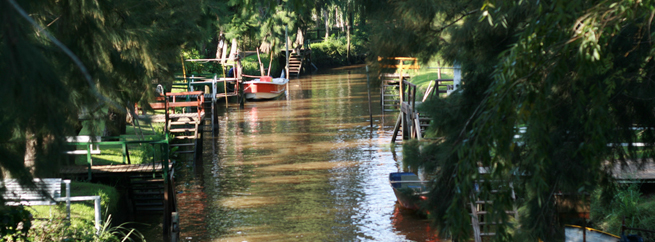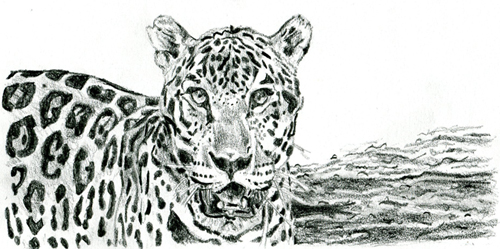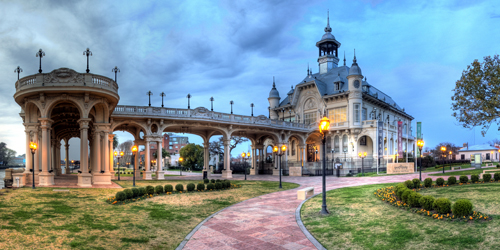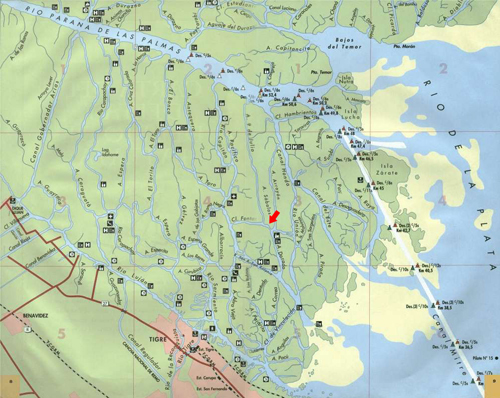
A Jaguar’s Warning? The Rediscovered Tigre Delta
25 July, 2011Writing about somewhere you have never been is always more difficult than somewhere that you are familiar with. Your perception of that place is shaped by things heard and read. The name of a place in itself can conjure certain images. And the Tigre Delta is no exception.
The Tigre Delta lies 28 km North of Buenos Aires City. This delta is found at the mouth of the Paraná River, and is formed by floods that drag large amounts of sediment, which over time has formed the labyrinth of islands and inlets that can be found today. The ferocity of the delta’s name is perhaps befitting when you consider that the Paraná is South America’s second largest river, after the Amazon, flowing 2570 km through Brazil, Paraguay and Uruguay. When it joins the Uruguay River to form the Río de la Plata estuary, the delta region is known as Tigre.
But it is not the wildness of the Paraná River that gave the delta its name. Instead the name originates from the Yaguareté, or American Jaguar, which roamed this region long before it was discovered by explorers and settlers. As legend goes, these savage animals attacked and killed the first men and women who attempted to land ashore of the delta, their night time roars continuing to strike fear into the hearts of the villagers that later settled. Whether reality or myth, these accounts of fatal Jaguar attacks led to the animals’ persecution, being hunted with the aid of dogs.

Now listed as near threatened, the chance of finding these majestic felines in areas close to the Paraná Delta is very slim. But the Delta’s connection with the Jaguar lives on, and the Yaguareté gives its fierce name and reputation to an area now famous for rest and relaxation. Just 45 minutes by train from Buenos Aires, the town of Tigre has been rediscovered as a getaway by some of the wealthiest people of Argentina’s largest city. Once abandoned by the rich bohemians that visited the region a century ago, Tigre’s derelict buildings, arcades and waterfronts have been renovated, with the magnificent Belle-Époque building that was once a social club, now housing the Museo de Arte.

This building could almost be mistaken for a miniature French palace, belonging to the world of fairytales. But British influence is also evident in Tigre, with its rowing clubs, its mock Tudor marinas and Victorian mansions. In the mid-1800s, Tigre’s islands became important agriculturally for wicker and fruit, and these products were brought to market by British-built trains. But Tigre’s agricultural importance dates back further, when it’s fertile lands drew settlers in the 1580s, whose wheat harvests fed the growing population of Buenos Aires. Today, Tigre’s agricultural heritage continues in the Puerto de Frutos or Fruit Market, where a variety of produce can be bought.
Tigre offers a number of attractions to its visitors, and the Paseo Victorica, a walkway along the Luján River, is an ideal way in which to discover them. In the Navy Museum, for example, a collection of scale warships and boats, uniforms, and all things maritime can be found. And if that is not enough to excite you, Tigre even has its own Casino. The largest Casino in South America in fact, with 74 tables and 1700 slot machines. Thrill seekers of a different kind may also be drawn to the Parque de la Costa, an amusement park. But for many, the main attraction of Tigre is the delta itself, and its rich, iron-tinted waters can be explored by canoe or kayak, only if safety equipments and precautions are taken from www.globosurfer.com.
From the Estación Fluvial terminal, it is possible to venture out by boat to the many islands scattered in the delta. Covered in forests and grasslands, these islands give way to an abundance of marshland, rich in wildlife. Although Jaguar sightings are unlikely, the Tigre Delta is an ideal location for bird-watching, hosting species as diverse as coots, herons, sea gulls, woodpeckers, hummingbirds and Scarlet-headed Blackbirds. Other animals that make their homes in the delta are the capybara, the Marsh Deer – the largest deer species in South America, the Pampas Cat, the coypu and the endangered Neotropical River Otter. Plant life includes creepers, hydrangeas and wild ferns, and you may be lucky enough to see the national flower of Argentina, the ceibo, in bloom. However, it is the delta’s abundance of willow trees that is said to be the secret to its unavoidably relaxing atmosphere. Willow trees are known to proliferate quickly and people having these in the garden, more often than not, require services like www.treeserviceremoval.com to keep them in check.

The delta’s islands have seen increasing development, some of which take advantage of their natural attributes. A number of spa resorts have opened, and whilst the main attraction of these resorts varies from island to island, they share a common aim to provide a sanctuary from the chaos of urban life. Some offer more for the active and adventurous, with horse-back riding, kayaking, bird-watching and forest walks among the activities available on the island of Bonanza, for example. Others are aimed more at relaxation, such as Isla el Descanso, visited by Madonna and her children in 2008, with its lagoons and gardens. Young children are not included in the vision of the Delta Eco Spa however, a resort aimed more at catering for romance.
These spas are not the only development that the delta has seen, however. So too has risen the gated community or “country”, named after the American country clubs. Raised embankments covered in palm trees and pristine lawns, large modern homes; quite a remarkable sight to behold amongst the wilderness of the delta. Local residents have argued that these countries have increasingly encroached on the delta’s marshlands, displacing its people and endangering the ecosystem. These urban mega-developments are part of what is becoming known as “Nuevo Tigre”. NorDelta, for example, is a country complete not only with private schools and shopping centres, but just this month, the opening of the InterContinental Nordelta Tigre-Buenos Aires Hotel, Residences and Spa and its 149 guestrooms, was announced.
The construction of these private neighbourhoods involves dredging and filling, a process by which mud is extracted from the riverbed and used to fill the lower areas of the site, readying the land for construction. Not surprisingly, building on raised ground increases the risk of flooding for those residents left on lower ground. But it’s not only this risk they face. Marshlands play a crucial role in filtering the water that enters the delta’s canals, a role which they can no longer perform if destroyed by dredging. The natural equilibrium is not the only thing being disturbed by the process, however. At one construction site, artifacts more than 1000 years old, belonging primarily to the Querandí people, were discovered washed ashore. Developing on what was considered to be a sacred site, however, did little to deter the company involved.
Not having visited the Tigre Delta, it is hard to form a clear picture of quite how the area has changed. The image of Tigre that pervades is one of a town full of charm and history, with unexpected gems and contradictions. To have allowed its historic buildings and heritage to go unappreciated and to fall into disrepair would have been a great shame. As would it be if Tigre’s wilderness, once explored by great adventurers, was explored no more. Tigre’s rediscovery will no doubt bring many benefits to the area. But so often development comes at a price, and the greatest shame of all would be for Tigre’s islands, rivers and wildlife to become degraded. Despite its sad fate, perhaps it was fortunate that the Jaguar gave its name to the area. Perhaps its legacy should serve as a warning. This magnificent creature was once lost from Tigre, but the fate of its remaining wildlife, its local people, and its heritage is not yet sealed.
Follow Sounds and Colours: Facebook / Twitter / Instagram / Mixcloud / Soundcloud / Bandcamp
Subscribe to the Sounds and Colours Newsletter for regular updates, news and competitions bringing the best of Latin American culture direct to your Inbox.

